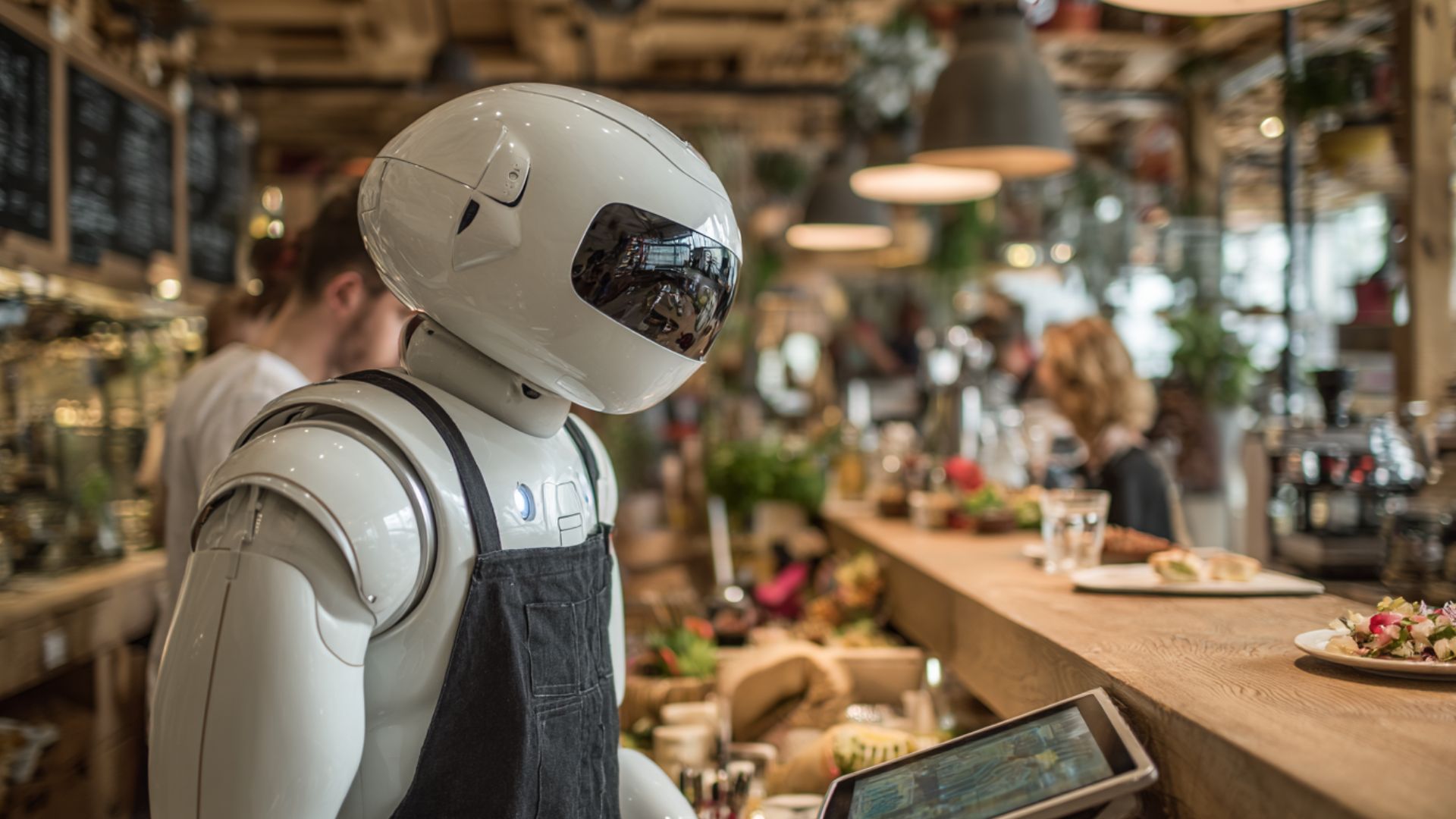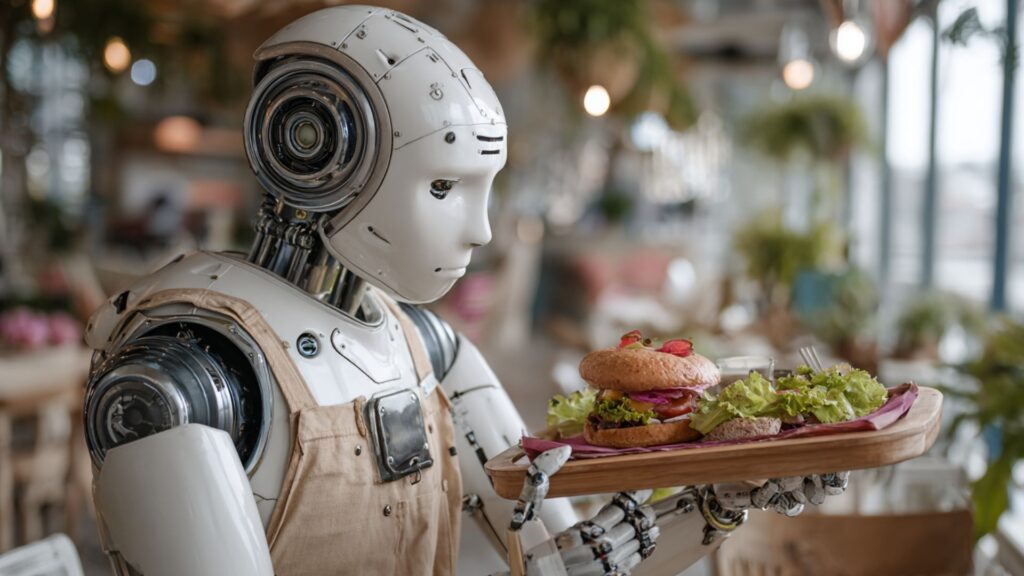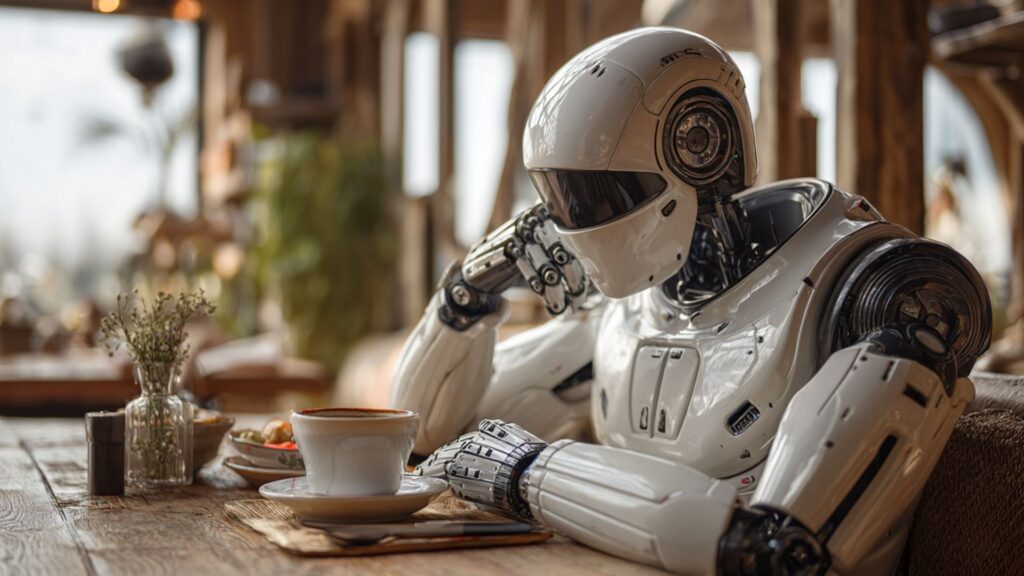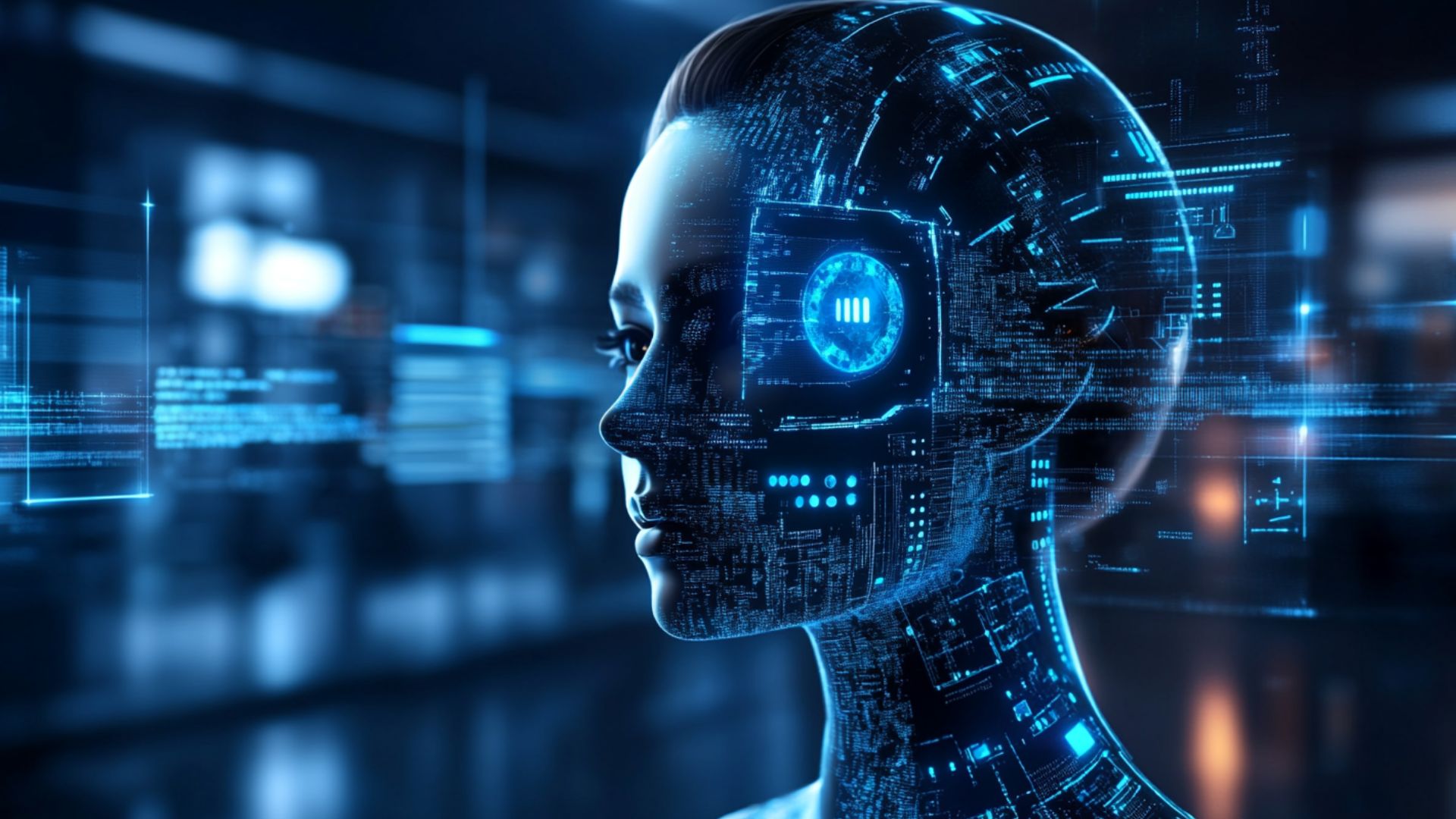AI in Restaurants: How Artificial Intelligence Is Transforming the Restaurant Industry in 2025

The restaurant industry is evolving rapidly, with technology driving this transformation. Artificial intelligence is revolutionizing how restaurants operate, serve customers, and increase profitability. AI makes dining experiences faster, more enjoyable, and more efficient. This ranges from smart kitchens that cook with precision to robotic servers delivering meals. In 2025, AI is no longer a futuristic concept — it's a reality changing how we dine out.
This article explores the world of AI-powered restaurants. We'll cover what an AI restaurant is, how AI is applied across different areas, and the cutting-edge technology powering this shift. We'll also examine the benefits and challenges of adopting AI systems. Whether you're a curious customer interested in the future of dining or a restaurant owner looking to stay competitive, our guide will show you how AI is reshaping this industry.
What Is an AI Restaurant?
An AI restaurant is a dining establishment that uses artificial intelligence to streamline operations and enhance customer experiences. Traditional restaurants rely on human staff and basic automation. AI restaurants use smart systems that learn, adapt, and make decisions independently. These restaurants integrate technology to make every step smoother and smarter. This covers everything from taking orders to preparing food and managing supplies.
Picture walking into a restaurant where a touchscreen kiosk suggests your favorite meal based on past visits. A robot delivers your food while the kitchen uses AI to predict daily food preparation needs. This represents the essence of a high-tech restaurant powered by AI technology.
Core Features of AI-Powered Restaurants
AI restaurants stand out because of their innovative features:
- Self-ordering kiosks allow customers to use touchscreens to place orders while AI suggests items based on preferences, dietary needs, or popular choices. These kiosks reduce wait times and simplify the ordering process.
- Facial recognition for loyalty programs uses cameras to identify regular customers and offer personalized deals. For example, customers might receive discounts on their favorite dishes without needing a loyalty card.
- Robotic chefs handle repetitive tasks such as flipping burgers, assembling salads, or baking pizzas. This ensures consistency and speed in food preparation.
- Voice assistants enable customers to order food by speaking to devices like Siri or Alexa. These systems understand natural language and make ordering completely hands-free.
- Predictive inventory management analyzes sales data to predict AI restaurant food needs. This prevents shortages or excess stock that could go to waste.
These features make dining more convenient for customers while helping restaurant owners save time, reduce costs, and improve service quality.
AI vs Traditional Restaurant Automation
Traditional restaurant automation relies on tools like online ordering apps, conveyor belts for sushi, or basic cash registers. These systems streamline specific tasks but operate on fixed rules. They don't adapt to changing conditions or learn from new information. For example, an online ordering app might allow customers to place orders quickly. However, it can't suggest new items based on preferences or adjust to sudden demand changes.
Artificial intelligence in the restaurant industry is dynamic and intelligent. It learns from data, predicts trends, and personalizes experiences in ways traditional automation cannot. For instance, an AI system might notice that a customer frequently orders vegetarian dishes. Then it can recommend a new plant-based option tailored to their tastes. It can also analyze broader patterns, such as which dishes sell best on weekends or during holidays. Then it adjusts menus or inventory accordingly. This adaptability makes AI in restaurants far more powerful than older methods.
Traditional automation simply repeats pre-programmed tasks without improvement. AI solutions evolve over time using machine learning to refine predictions and decisions. This includes optimizing staffing schedules and forecasting ingredient needs to reduce waste. This ability to think, learn, and adapt makes AI in restaurants a game-changer. It transforms operations, customer experiences, and profitability in ways static systems never could.
How AI Is Used in the Restaurant Industry

Restaurants are finding creative ways to use AI to improve every aspect of their business. Let's explore some of the most impactful applications:
- AI-Driven Menus. Restaurant artificial intelligence uses data to create menus that match customer preferences and boost sales. AI analyzes sales history, customer reviews, and external factors like weather or local events to suggest menu changes. For example, on a rainy day, AI might promote warm soups or comfort foods. It can also highlight high-margin items to increase profits. By tailoring menus dynamically, restaurants can keep customers satisfied and maximize revenue.
- Dynamic Pricing. Dynamic pricing allows restaurants to adjust prices based on real-time factors. These include demand, time of day, or customer behavior. For example, a busy downtown café might charge more for coffee during the morning rush. However, it can offer discounts during quieter afternoon hours. AI ensures prices remain fair while helping restaurants earn more during peak times. Customers benefit from deals during off-hours while restaurants optimize their income.
- AI in Staffing. Managing staff schedules and hiring presents significant challenges for restaurant AI. AI simplifies staffing by analyzing data such as customer traffic, employee availability, and performance metrics. AI can create schedules that ensure adequate staffing during busy hours without overstaffing during slow periods. It can also scan resumes to find candidates with the right skills. This saves managers time and ensures better hires. AI helps restaurants run smoothly while keeping employees satisfied.
- Smart Food Preparation. Smart food preparation uses AI to make cooking faster, more consistent, and less wasteful. Robotic arms can handle repetitive tasks such as chopping vegetables, grilling burgers, or assembling sandwiches with exact precision. AI systems also monitor cooking processes and adjust temperatures or timing to prevent overcooking or undercooking. This ensures every dish meets the same high standard, even during busy dinner rushes. It also reduces food waste from mistakes.
- Chatbot-Based Reservations. AI chatbots make booking a table easier than ever. They handle reservations through text, voice, or social media. They answer questions, suggest available times, and accommodate special requests such as window seats or birthday celebrations. Available 24/7, these chatbots ensure customers can book anytime without waiting for human assistance. This saves staff time and improves the customer experience.
AI for Customer Service and Personalization
AI is transforming how AI in the restaurant industry connects with customers. AI recommendation systems analyze a customer's order history to suggest dishes they're likely to enjoy. For example, if someone frequently orders spicy tacos, the AI might recommend a new spicy burrito. Personalized meal suggestions go further by catering to specific needs. This includes suggesting gluten-free or low-calorie options based on a customer's profile.
AI-powered loyalty programs go beyond basic point systems. They track individual customer habits and offer tailored rewards. For example, they might offer a free coffee for someone who buys one every morning. Multilingual AI ordering interfaces make restaurants more accessible by translating menus or taking orders in different languages. This is especially helpful in diverse cities or tourist areas where customers may not speak the local language.
AI for Restaurant Operations and Supply Chain
AI is transforming behind-the-scenes restaurant operations, making them more efficient and cost-effective. One major application is demand forecasting, where machine learning analyzes historical sales, weather patterns, and local events. This technology helps managers predict how many customers to expect on any given day or week. By getting these predictions right, restaurants can plan staffing levels, food preparation, and inventory needs precisely. This ensures they're neither understaffed during busy periods nor overstaffed during slow ones. It reduces labor costs and improves service efficiency.
Accurate demand forecasting also helps prevent overstocking ingredients that might spoil, significantly reducing food waste. For example, if artificial intelligence in the restaurant industry predicts a slow Tuesday, the restaurant can order less perishable stock, such as fresh produce, to avoid waste. This not only saves money but also supports sustainability efforts by reducing discarded food.
Another critical area is optimizing procurement. AI evaluates supplier data, including prices, delivery schedules, and ingredient quality, to identify the best purchasing options. For instance, if a restaurant uses large quantities of tomatoes, AI might recommend a more affordable supplier or suggest buying in bulk during seasonal price drops. This ensures a steady supply of fresh, high-quality ingredients at lower costs. By streamlining these processes, artificial intelligence for restaurants enhances operational efficiency, reduces expenses, and maintains a reliable supply chain. This allows restaurants to focus on delivering great food and service.
Top AI Technologies in Modern Restaurants

Several advanced technologies are driving the rise of AI restaurants:
- Computer vision uses AI cameras to recognize customers for loyalty programs, monitor food quality, or check cleanliness. For instance, a camera might detect a spilled drink and alert staff to clean it up quickly.
- Natural Language Processing (NLP) for voice ordering allows customers to order by speaking to a device. These systems understand different accents, slang, and languages, making ordering seamless and inclusive.
- Robotics involves AI robots for restaurants taking on tasks like cooking, serving, and cleaning. Some restaurants use robotic arms to prepare food. Others use delivery robots to bring meals to tables.
- Machine learning for analytics analyzes data to uncover trends, such as which dishes sell best or when customers visit most frequently. This helps restaurants make data-driven decisions to improve operations and profits.
- AI POS integrations feature point-of-sale systems with AI that track sales, suggest upsells like adding fries to an order, and predict busy hours. This helps staff prepare and ensures a smooth customer experience.
These technologies work together to create high-tech restaurants that are efficient, customer-focused, and ready for the future.
Benefits and Challenges of Artificial Intelligence in Restaurants
Adopting AI restaurant systems comes with significant rewards, but it's not without challenges. Let's examine the pros and cons.
Benefits:
- Speed. AI accelerates everything from ordering to food preparation. Customers receive their meals faster, and staff can focus on tasks that require a human touch.
- Efficiency. AI reduces errors in cooking, inventory management, and customer service. For example, it ensures ingredients are used before they spoil and that dishes are prepared consistently.
- Labor cost reduction. Robots and AI can handle repetitive tasks, reducing staffing needs in certain roles. This saves money, especially in high-wage areas.
- Personalization. AI makes every customer feel special by offering tailored recommendations, rewards, and experiences based on their preferences.
- Improved profits. By optimizing pricing, menus, and operations, AI helps restaurants increase revenue.
Challenges:
- Implementation costs. Setting up AI systems like robots, kiosks, or analytics software can be expensive. Small restaurants may struggle to afford the initial investment.
- Staff resistance. Some employees may worry that AI will replace their jobs or significantly change their roles. This leads to hesitation or pushback.
- Maintenance requirements. AI systems need regular updates, repairs, and monitoring. This can be costly and require technical expertise.
- Data security concerns. AI collects sensitive customer data, such as order histories or facial recognition information. Restaurants must invest in strong security measures to protect this data.
- Customer acceptance. Some diners may prefer human interaction over machines. Restaurants need to balance AI with personal service to keep everyone satisfied.
Looking ahead, the future of AI in the restaurant industry will continue to grow. As technology becomes cheaper and easier to use, more restaurants — both large and small — will adopt AI tools. We might see even smarter systems, such as AI that designs entirely new recipes based on customer tastes or robots that can handle complex cooking tasks. However, restaurants will need to address ongoing challenges including cost, staff training, and customer comfort.
FAQ: Common Questions About AI in Restaurants
An AI restaurant is a dining establishment that uses artificial intelligence to improve its operations. This includes smart kiosks for ordering, AI systems that predict food preparation needs, or robotic chefs cooking meals. These restaurants use technology to make service faster, menus more personalized, and operations smoother. For example, AI might suggest your favorite dish or help the kitchen reduce food waste. While humans still play an important role, AI handles repetitive tasks, allowing staff to focus on hospitality. In 2025, these restaurants are becoming increasingly common. They blend technology with dining to create modern, efficient experiences.
Artificial intelligence is transforming the restaurant industry in 2025 through personalized ordering that suggests meals based on past choices. It assists with staffing by creating schedules based on busy periods. AI automates kitchen tasks like cooking or portion control. For inventory management, AI forecasts demand to prevent waste or shortages. Front-of-house operations use chatbots to handle reservations and answer questions. Some restaurants employ robots to deliver food to tables. By analyzing data, AI makes restaurants faster and cheaper to operate while maintaining customer-friendly service. It preserves the human touch for quality checks and friendly interactions.
No, AI restaurants are not fully replacing human staff. They use technology to handle repetitive tasks like taking orders or tracking inventory. This allows workers to focus on things AI cannot do well, such as creating a welcoming atmosphere or ensuring food quality. For example, while AI kiosks might take your order, a human ensures it's prepared perfectly. In 2025, most restaurants still need people for management, customer interaction, and oversight. AI supports staff by making their jobs easier. The goal is collaboration: AI handles routine tasks while people provide the heart of the dining experience.
AI offers significant advantages for restaurants in 2025. It speeds up service with tools like self-ordering kiosks, reducing wait times. AI boosts efficiency by automating tasks such as inventory tracking and food preparation. It reduces labor costs by handling repetitive jobs that require fewer staff for basic tasks. Personalization is a major benefit — AI suggests meals based on customer preferences, making dining feel special. It also accurately predicts inventory and staffing needs, saving money and reducing waste. Overall, AI makes restaurants run more smoothly, serve customers faster, and create experiences that encourage repeat visits.
Yes, AI is becoming more affordable for small restaurants in 2025. Entry-level tools such as chatbot ordering systems or AI-powered point-of-sale analytics are budget-friendly and easy to implement. These help small restaurants personalize menus and track sales without significant financial burden. However, advanced systems like robotic chefs or complete AI kitchen setups remain expensive. These are better suited for larger chains. Smaller establishments can start with simple AI tools like reservation apps or demand forecasting software and scale up as they grow. As more companies offer affordable AI solutions, small restaurants can now participate in the technology revolution without enormous costs.


